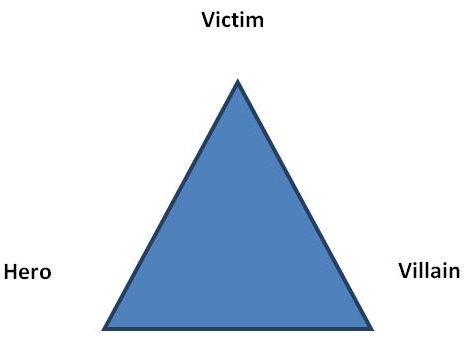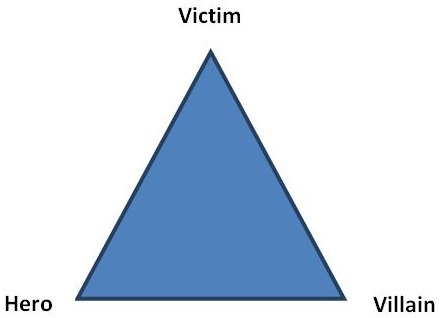When you hear “conflict” which of these statements ring true for you?
a) Oh no, conflict is bad
b) Conflict should be avoided
c) It’s better not to stir the pot
d) Someone did something wrong
e) Bring it on!
Most of us are not comfortable engaging in conflict – whether at work or in our personal lives. The messages we received while growing up shaped our thinking and core beliefs about conflict. These messages, (don’t rock the boat, conflict should be avoided at all costs, better not to bring it up) are often reinforced through the various environments we are immersed in – family, friends, school, community, and social groups.
Because a common belief is that conflict should be avoided, leaders and employees seldom step into dialogue about difficult issues that could get ‘messy’. The negative affect of avoidance on interpersonal relationships comes with a high cost to the organization. Avoiding possible conflict tends to inflate issues and diminishes employee and organizational performance, ultimately influencing an organization’s culture – particularly if the conflict goes underground.
While there is no question that workplace conflict can be messy and at times daunting to address, you can develop the skills and knowledge required to proactively approach a conflict in order to get to resolution. One model that can support the development of these advanced skills is the Drama Triangle.
Drama Triangle
This model has helped me personally and professionally, and has made a significant difference for many of the clients I’ve worked with through workplace conflicts. The Drama Triangle is something we are all familiar with as we have been socialized with it as young children:

Consider any children’s book you have read, or soap opera, TV drama or movie you have watched. In every story, these key roles are at play:
- Victim who has been unfairly treated (think princess in tower)
- Villain who is taking advantage of the victim (think wicked witch or mean ogre)
- Hero who is there to right a wrong and rescue the victim (think prince with shiny armour on horse)
Drama Triangle – A Workplace Example:
Abby and Charles have worked together for several years and have an amicable professional relationship. They are friendly but don’t divulge too much personal information to one another. Every week they go out with the team for coffee break and conversation is usually light – work gossip, plans for vacations and weekends, etc.
Abby and Charles have an interdependent relationship in terms of their work priorities and need one other to be successful. Both report to Bob who has been working with them for years. Until recently there has never been an issue.
In the past month, Abby has been coming in late or leaving work early and, as a result, she has not been meeting her deadlines. This has caused Charles to miss his deadlines. Charles is frustrated with Abby because he prides himself on the quality and timeliness of his deliverables. He feels his reputation is at stake.
Charles supposes there is something going on with Abby’s personal life but he’s hesitant to ask; he believes it’s not his place to probe about anything outside of work. Meanwhile, he’s getting more and more upset with her but he’s afraid to raise it with her.
Charles has one good friend at work – Don – and shared his frustration about Abby and how it’s impacting his work. Don has a somewhat closer relationship with Abby and has offered to step in and see if he can figure out what’s going on with Abby and maybe get her back on track.
Let’s look at this through the lens of the Drama Triangle:

Victims:
- Charles is playing victim in this scenario because he is upset by Abby’s actions impacting his quality/timely work.
- Abby may be a victim in this scenario as well due to the fact that she has personal issues going on at home. Her mother was recently diagnosed with terminal cancer and Abby is trying to juggle her mother’s care with her job. She feels she is not getting the support she should be from her boss Bob (who knows her predicament), and Bob has not adjusted her workload to help her out.
Villains:
- Charles is making Abby out to be the villain because she has not met her deadlines and it has negatively impacted his work.
- Abby has made Bob a villain because he is not helping her out (even temporarily) as she tries to adjust. Abby may also be making the organization a villain because the ‘company doesn’t help us out when we are stuck with these personal issues’.
Hero:
- Don has stepped in quite easily to play the role of the hero and try to help smooth things over. He has offered to find out from Abby what is going on (enabling Charles to not have to talk with Abby about ‘this stuff’.)
Rather than Charles approaching Abby to share the impact on him and explore what may be going on for her, he is choosing to stew about it, talking about it with others and creating “Interpersonal Mush”. (Dr. Gervase Bushe, Clear Leadership).
According to Gervase, “most of the time conflict is due to interpersonal communication (aka miscommunication)”. He explains that miscommunication results in our sense-making – that is;
- we make up stories based on what we know (and don’t know), then
- we build up evidence to support our stories, then
- we enroll others into our stories, then
- we discard any facts that do not corroborate with our story, and
- eventually our stories become our truths.
This “interpersonal mush” hampers the opportunity to create a culture of clear straight talk whereby real conversations occur so that people check out their stories with one another from a place of curiosity. Beginning with curiosity invites a better understanding of each person’s perspectives. It is through open clear dialogue that they can reach resolution; this means stepping outside of the triangle and focusing on the issue.
Tips for Moving through your conflict
The following are a few tips to help you move from the drama triangle to clear communication:
– Identify the issue
Clarify the real issue by identifying the facts that have occurred. It’s easy to get caught in your story-making and feelings about the conflict versus focusing on the facts. A great strategy is to pretend you have a video-camera replaying ‘what happened’ so that you only focus on the facts and don’t get caught with your thoughts and feelings about what happened.
– Step outside the drama triangle
Acknowledge that every person usually feels hit as the ‘victim’ first. Once you’ve acknowledged your inner victim and licked your wounds, focus on the key issue that upset you. By making this as factual as possible and determining what a ‘win’ would be for everyone involved, you are stepping outside the triangle and maintaining objectivity versus personalizing the conflict.
– Determine your want
Get clear about what you want as a result of exploring this conflict situation. Until you determine this, it will be harder to get to a point of resolution. It’s important that you can articulate this as you work through the conflict.
– Determine your non-negotiables
Before engaging in a dialogue with the person you are in conflict with (i.e., who you’ve made out to be the villain), it will help you to identify what you are willing to be flexible about and what are your non-negotiables. Articulate this and provide context so they understand why these are important to you.
– Be curious
It is very difficult in a conflict situation, when in our victim position, to consider any other perspective than our own. If anything, we are looking for other people to corroborate our position and find a hero to right our wrong. If you are truly committed to resolution, you must listen and seek to understand the other person(s) perspective so you can better appreciate what the impacts have been on them. This is the path to a realistic and sustainable resolution that works for all parties involved.
This model can help you talk through a conflict with someone:
(Young President’s Organization, Clean Talk, and Dr. Gervase Bushe, Clear Leadership)
Walking the Cube and Using Clean Talk
Observations
Examples:
|
Thoughts
Examples:
|
Wants
Avoid:
|
Feelings
Remember that word that end in “ed” (like frustrated, betrayed, disrespected) point the finger – so avoid passive words like these. |
In summary, being able to navigate through a conflict with clarity and objectively can allow a person to get clear about the issue, discuss the issue with those involved in a respectful and detached manner and find resolution.
For more information on Conflict Resolution and the Drama Triangle, check out Gary Harper’s book on the “Joy of Conflict” – http://www.joyofconflict.com/
And for more on Clear Leadership and Interpersonal Mush – http://www.clearlearning.ca/index.php?option=com_content&view=article&id=56&Itemid=65


